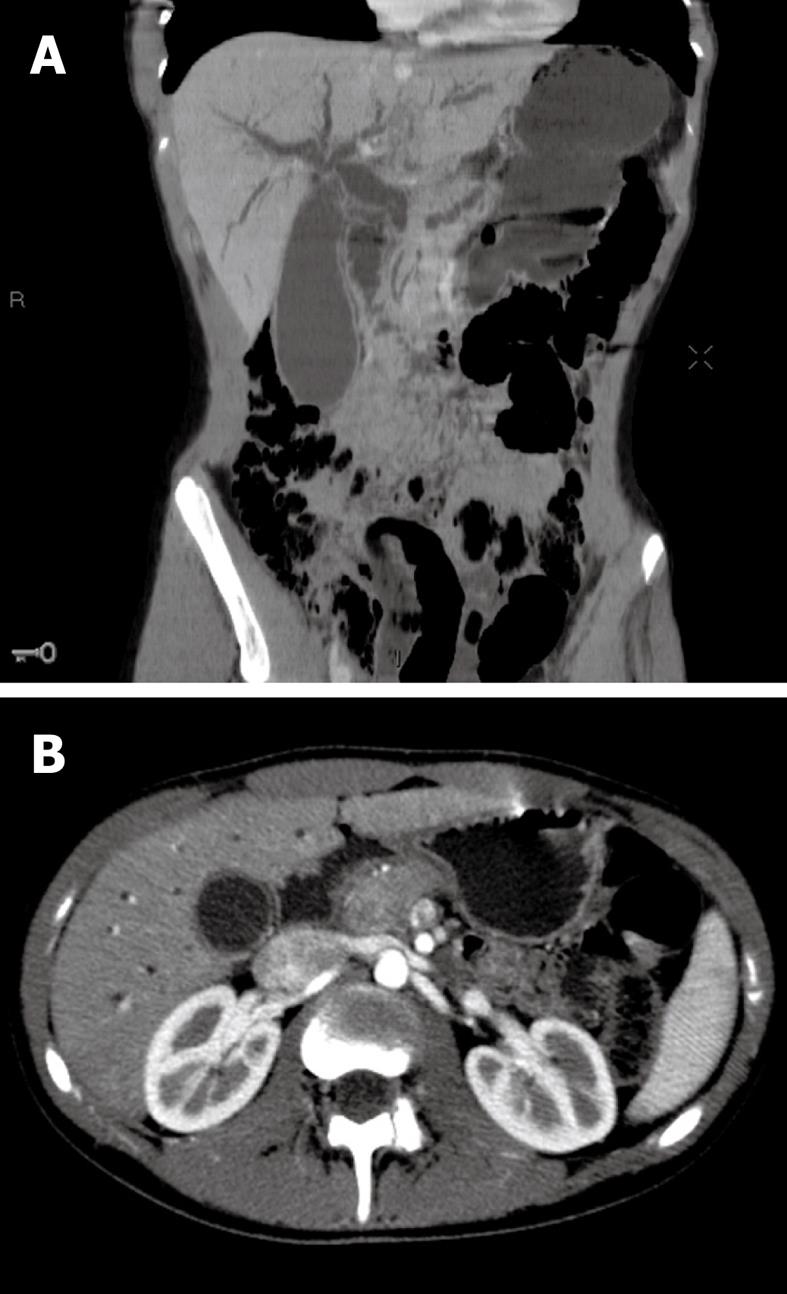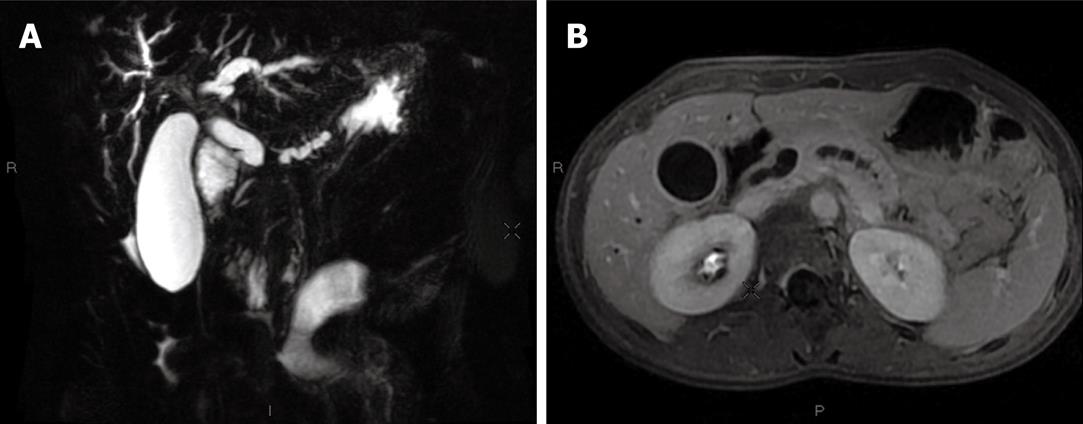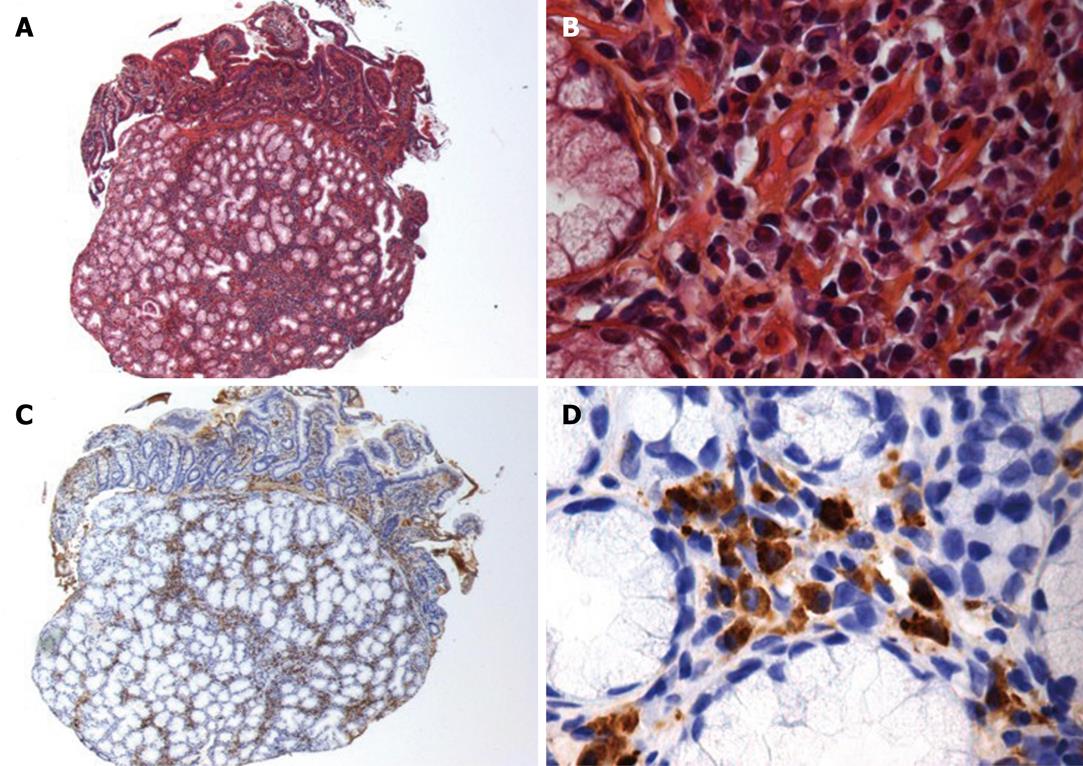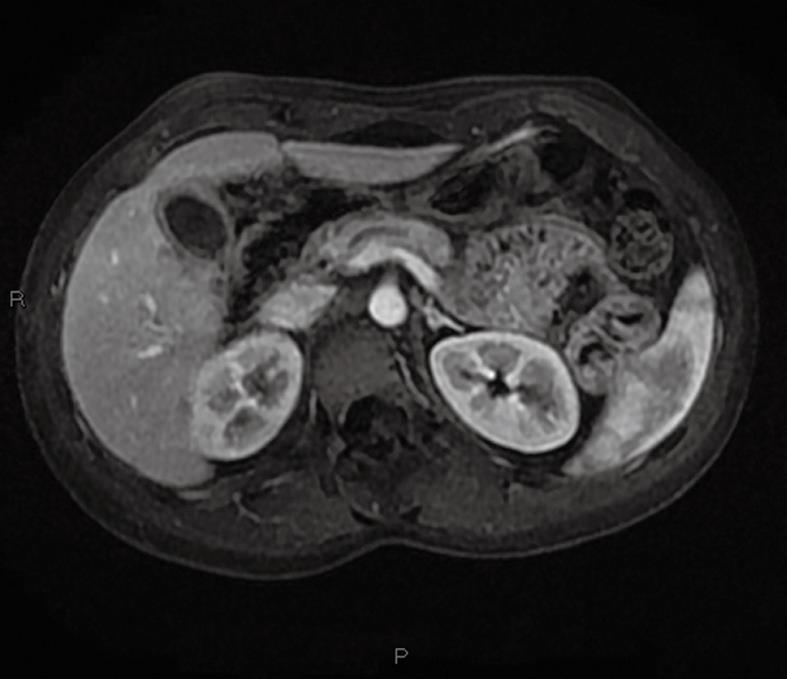Copyright
©2010 Baishideng.
World J Gastroenterol. Jun 21, 2010; 16(23): 2954-2958
Published online Jun 21, 2010. doi: 10.3748/wjg.v16.i23.2954
Published online Jun 21, 2010. doi: 10.3748/wjg.v16.i23.2954
Figure 1 Initial multi-detector computed tomography scan imaging.
A: CT scan before contrast injection, coronal reconstruction: enlargement of the main pancreatic duct and the biliary ducts, with enlarged gallbladder; B: CT scan after contrast injection, arterial phase, axial slice: lesion of the head of the pancreas, moderately enhanced after contrast injection.
Figure 2 Initial magnetic resonance imaging (MRI) imaging.
A: T2-weighted MRI, coronal slice: bicanalar dilation and enlarged gallbladder; B: T1-weighted MRI, axial slice: main biliary duct and gallbladder enlargement with a thick wall evocative of cholangitis; the main pancreatic duct is also irregularly enlarged.
Figure 3 Histological examination of periampular biopsies (notice that both duodenal mucosa and pancreatic parenchyma are visible).
A, B: Hematoxylin-eosin staining (A: × 125, B: × 500): atrophic acini surrounded by a fibrous stroma, associated with periductal lymphoplasmocytic infiltration; C, D: Anti-IgG4 immunostaining (C: × 125, D: × 500): the plasma cell infiltration expresses IgG4.
Figure 4 MRI at the end of steroid therapy.
T1-weighted MRI with gadolinium injection: normal main pancreatic duct and gallbladder; the mass in the head of the pancreas has totally disappeared.
- Citation: Neuzillet C, Lepère C, Hajjam ME, Palazzo L, Fabre M, Turki H, Hammel P, Rougier P, Mitry E. Autoimmune pancreatitis with atypical imaging findings that mimicked an endocrine tumor. World J Gastroenterol 2010; 16(23): 2954-2958
- URL: https://www.wjgnet.com/1007-9327/full/v16/i23/2954.htm
- DOI: https://dx.doi.org/10.3748/wjg.v16.i23.2954
















